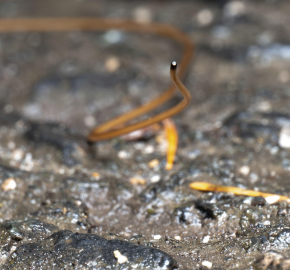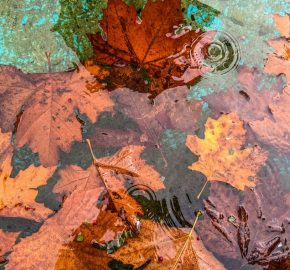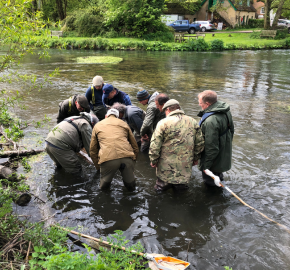Sam and the SmartRivers hubs – spring 2024
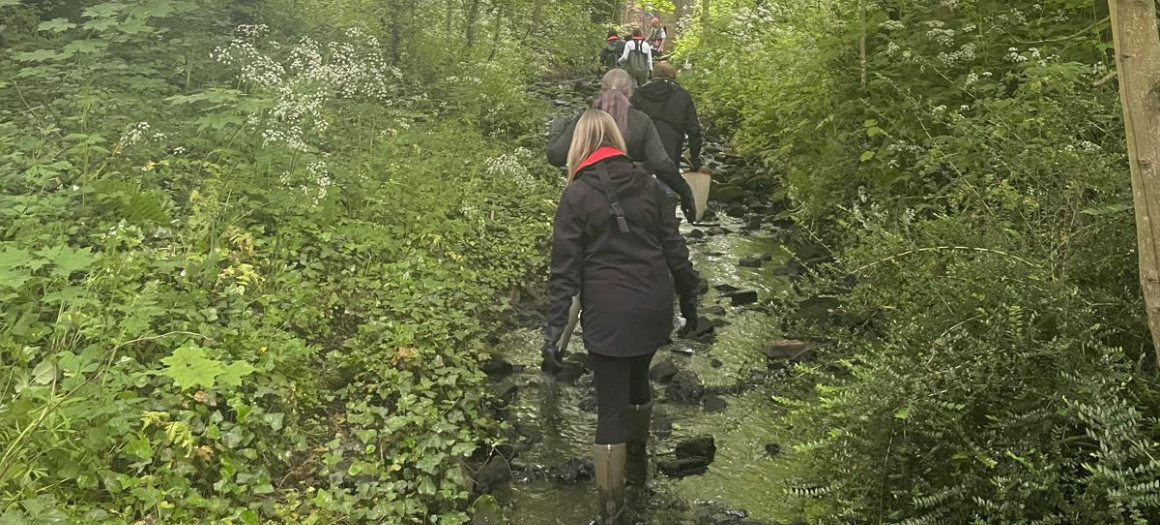
From the rain fed rivers of Scotland to the urban streams of London, SmartRivers spatial coverage continues to grow across the UK. Sam, our freshwater ecologist, supports hubs from all these different areas, each with unique objectives for their monitoring. Read on to find out more about his most recent hub experiences.
River Teith, Scotland.
I headed up to Stirling overnight on the Caledonian Sleeper in early April for a new hub on the River Teith being hosted by the Blair Drummond Estate. I was kindly rescued from the station at an ungodly hour of the morning in the rain by the hub lead, Jamie Muir. Jamie also sits on the Forth and District Salmon Fisheries Board and is highly concerned about the state of endangered Atlantic salmon populations, particularly on the Teith system. The hub are planning to use SmartRivers data in conjunction with electrofishing surveys. They hope to demonstrate that water quality in the catchment is generally good and that the absence of salmon in certain areas may be in part due to fish passes[1] below certain lochs not functioning as they should.
Alongside SmartRivers trainers Roger and John, we headed out into the Trossachs to collect benchmark samples at the five sites selected by the hub – four on tributaries of the Teith system and one on the main river. It was certainly one of my most scenic hub visits to date, with a backdrop of Munros and water temperatures running from the lochs reminding me of the benefits neoprene wading socks can bring.
The next day we met with the volunteers for their first training day. We were fortunate to get some sun while out on the Ardoch Burn below Doune Castle and a great afternoon was spent learning kick-sweep sampling techniques. One of the remarkable things when sampling these clean, cold, upland waters (at least for a southerner like me) is the diversity of stoneflies found in a sample. Particularly for large species, such as Dinocras cephalotes, which live in rivers as a nymphs for multiple years in order to develop and are therefore more vulnerable to fluctuations in water quality over this timescale.
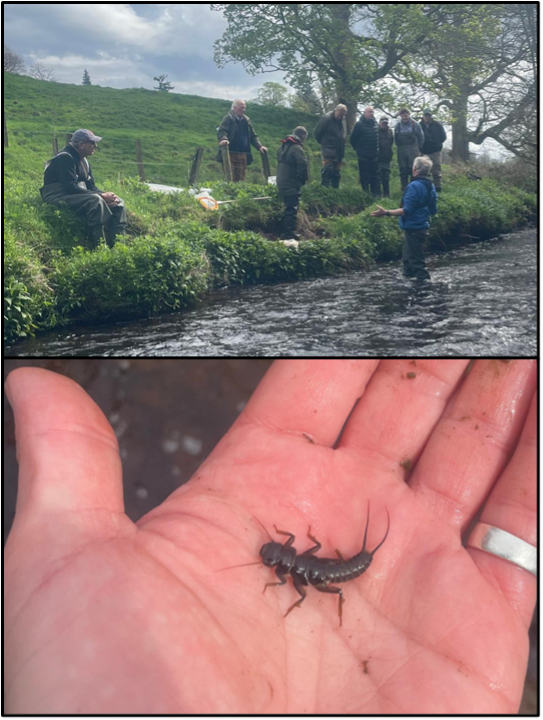
Rivers Don and Ouseburn, North England.
In mid-May I travelled up to Newcastle, where Tyne Rivers Trust were adding two new rivers to the SmartRivers network, the Don and the Ouseburn. These rivers are both urban, so experience a lot of anthropogenic pressure, from increased densities of pollution sources (such as combined sewer overflows) to higher levels of recreational use. Benchmark samples had already been collected by trainers Nick and Chris earlier in the month, so this visit entailed back-to-back days of ‘Day 1’ training[2] for each river’s group of volunteers. We were also joined by WildFish’s campaigns researcher Daniel, who learnt a lot about freshwater invertebrates… but also about the woes of a leaky welly when sampling.
The areas of river where we trained volunteers were very different, but both served as examples of the varied pressures faced by urban rivers. First up was the Ouseburn where we were based in Jesmond Dene, an oasis of woodland surrounded by city. At first glance it was a fairly picturesque woodland river, but the dense mats of algae coating the rocks of the riverbed, and the smell of sewage hinted at what is really going on under the surface. The next day’s training was on the Monkton Burn[3], a tributary of the Don, while there was less in the way of unpleasant smells at this site it did highlight the pressures that low volumes of flowing water and the build-up of litter can have on aquatic life.
Led by Maddy Fowler, this hub hopes to use SmartRivers data to highlight the effects of particular inputs along the river and monitor biodiversity. While it is true that urban rivers face increased pressure from dense human populations, their accessibility also means the potential for lots of volunteers willing to do their bit. It was great to meet all the volunteers and to hear about why they got involved and their different backgrounds, from Environment Agency catchment managers to concerned local residents.
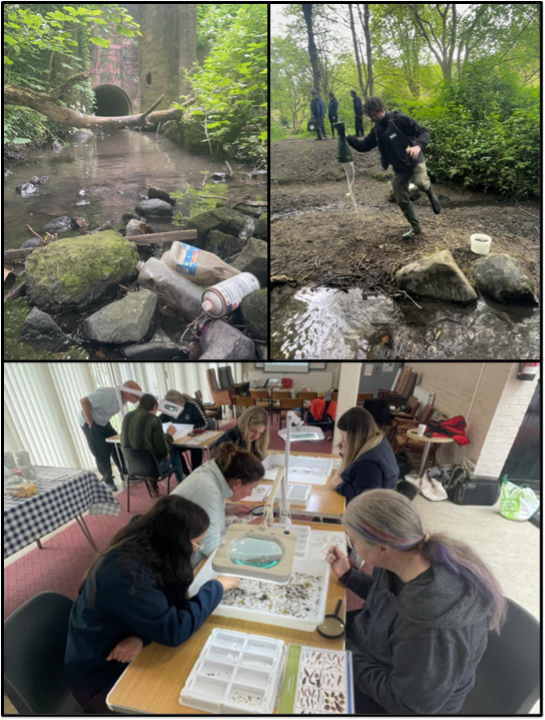
River Yealm, South West England.
In late-May, I headed to the River Yealm near Plymouth. Our hub here is hosted by the Yealm Estuary to Moor (YEM) group, a community project aimed at enhancing connectivity and biodiversity throughout the catchment. I had previously joined Jane Pennington and Tony Hawkins (the hub leads), as well as Matt and Richard (SmartRivers trainers) for autumn benchmarking in 2023. Unfortunately, the surveys at two of the lower sites the previous autumn surveys had indicated brackish water conditions[4]. As SmartRivers is designed around the sensitivities of freshwater invertebrate communities, in addition to taking the spring benchmarks, these brackish sites would now need moving further upstream.
Sadly, I missed the benchmark surveys , but was fortunate to meet up with everyone for the hubs’ two days of volunteer training. Matt and Richard were on their best behaviour as the training was being filmed to create a resource for future trainers as the SmartRivers programme continues to expand.
As with the Teith and Don/Ouseburn above, day 1 training consists of our volunteers learning how to take a sample and beginning to explore how we categorise and sort the invertebrates we find. It was great to see the river in a different season and we were fortunate to see some dippers flying up and down stream while we were sampling. Day 2 is where things get EVEN more interesting, and volunteers learn about how to identify the invertebrate themselves. Initially with tools to split some groups, such as the EPT riverflies[5], into their taxonomic families. Before using professional keys, customised expected species lists, and high-resolution macro images to develop the skills to collect the mixed-level taxonomic data that we use for monitoring water quality and biodiversity in SmartRivers.
Now that the Yealm has two seasons of professional benchmark data and the volunteers have completed both days of training, the YEM hub will be undertaking its first independent season of sampling in autumn 2024. Given the high levels of enthusiasm and the clear concern for the health of the river shown by the volunteers at the training, we’re sure they will do great!
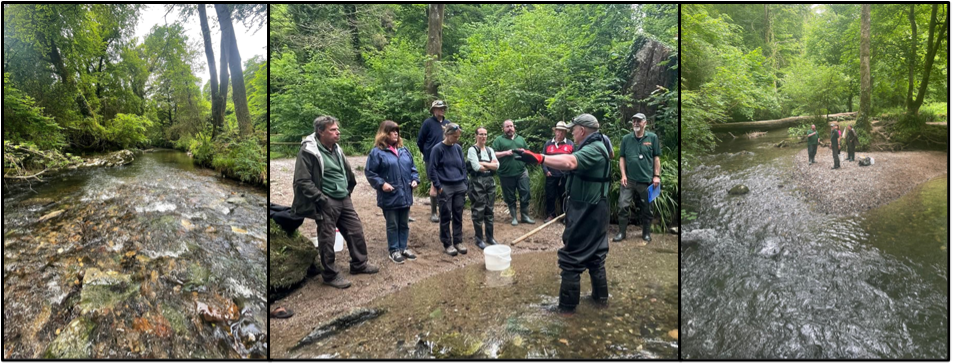
Autumn sampling for 2024 is already looming and it will be another bumper season. Not only will there be benchmark surveys and the second day of volunteer training for the hubs mentioned above (other than the Yealm). We will also be adding more rivers to the SmartRivers network with exciting new partnerships in Wales with the North Wales Rivers Trust as well as up in Scotland with the Findhorn, Nairn, and Lossie Rivers Trust.
May your wellies be dry, and your rivers be clean!
[1] Structures built by us to aid migrating fish overcome man-made obstacles. such as weirs and dams.
[2] SmartRivers’ Day 1 training consists of learning how to take a kick-sweep sample and the initial stages of invertebrate ID.
[3] A logistical surrogate for the Ouseburn.
[4] Primarily due to the presence of the shrimp Gammarus zaddachi, a species known to live in estuarine waters of Northen Europe.
[5] These are the mayflies (Ephemeroptera), caddisflies (Trichoptera), and stoneflies (Plecoptera). Pollution sensitive groups of insects that are well known biological indicators of water quality.


